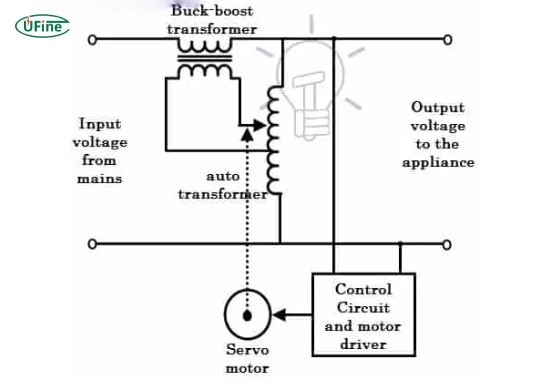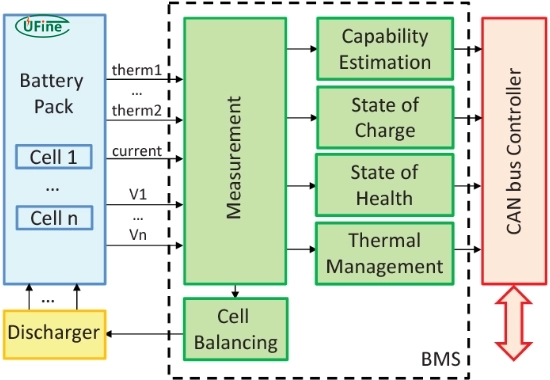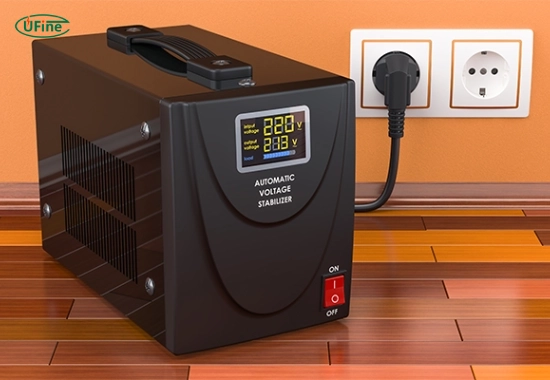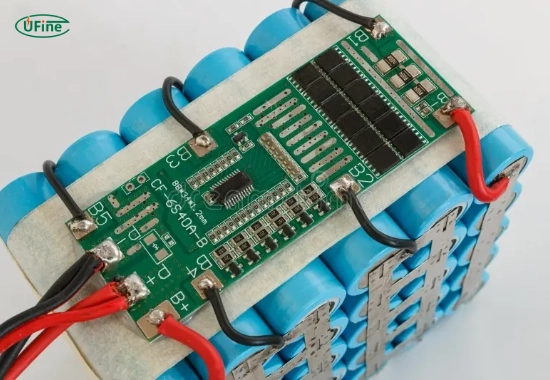Lithium-ion batteries have become the backbone of modern energy storage systems. Whether you’re powering an electric vehicle, a solar energy setup, or advanced electronics, maintaining the efficiency and longevity of your lithium-ion battery is crucial. Voltage stabilizers (VS) and battery management systems (BMS) are standard solutions for stability and performance. But which one is better for your specific needs?
In this article, we’ll discuss these technologies’ differences, advantages, and use cases, helping you make an informed decision about your lithium-ion setup.
Part 1. What is a voltage stabilizer?
A voltage stabilizer is an electrical device designed to regulate and stabilize the voltage level supplied to a system or device. Its primary function is to protect sensitive electronics and components from voltage fluctuations, surges, or drops that can cause damage or inefficiency.
How does a voltage stabilizer work?
A voltage stabilizer automatically adjusts the incoming voltage to ensure it stays within a safe range. It uses transformers, relays, or electronic circuits to regulate excessive or insufficient voltage levels, delivering consistent output to the connected system.
Key features of a voltage stabilizer:
- Voltage regulation: Ensures consistent voltage supply to prevent damage.
- Surge protection: Shields devices from sudden power spikes.
- Efficiency improvement: Enhances the performance of connected devices by delivering the optimal voltage.
Voltage stabilizers are commonly used in industrial equipment, home appliances, and specific energy storage systems. But are they the right choice for lithium-ion batteries? Let’s investigate.
Part 2. What is a battery management system (BMS)?
A battery management system (BMS) is a specialized electronic system that monitors, controls, and protects lithium-ion batteries. It is essential for maintaining your battery pack’s performance, safety, and longevity.
How does a battery management system work?
The BMS monitors critical parameters such as voltage, current, temperature, and state of charge (SOC). If it detects irregularities—such as overheating or overcharging—it will take corrective action, such as shutting down the system or balancing the cells.
Key features of a battery management system:
- Cell balancing: Ensures all battery cells are charged and discharged evenly.
- Overcharge/over-discharge protection: Prevents damage caused by exceeding safe limits.
- Thermal management: Monitors and regulates battery temperature to avoid overheating.
- Communication protocols: Provides data about the battery’s health and status to users or connected systems.
When it comes to lithium-ion batteries, a BMS isn’t just a nice-to-have—it’s often a necessity. But how does it compare to a voltage stabilizer? Let’s explore their differences.
Part 3. Key differences between a voltage stabilizer and a battery management system
1. Functionality
- Voltage stabilizer: Focuses on stabilizing the input voltage and protecting devices from voltage fluctuations.
- Battery management system: This system focuses on monitoring and managing the battery’s internal operations, including cell balancing and thermal management.
2. Application
- Voltage stabilizer: Commonly used with appliances, industrial machines, and setups prone to power fluctuations.
- Battery management system: Specifically designed for battery packs, especially lithium-ion batteries, to ensure safety and efficiency.
3. Protection scope
- Voltage stabilizer: Protects external devices from unstable power supply.
- Battery management system: Protects the internal components of the battery pack itself.
4. Complexity
- Voltage stabilizer: Simple in design and operation, primarily focused on voltage regulation.
- Battery management system: This is more advanced and offers a range of features, such as cell balancing, thermal regulation, and communication protocols.
Understanding these differences, you can better determine which solution fits your needs.
Part 4. When should you use a voltage stabilizer?
A voltage stabilizer is ideal for situations where voltage fluctuations or surges are a common problem. Here are some scenarios where it’s most effective:
- Unstable power grids: A voltage stabilizer can protect connected devices if your energy source is prone to fluctuations.
- Sensitive electronics: Appliances like refrigerators, air conditioners, or industrial machinery benefit from stable voltage.
- Backup power systems: Voltage stabilizers can regulate the output of generators or inverters.
However, a voltage stabilizer may be one of many critical components for lithium-ion batteries. Instead, a BMS is often more suitable.
Part 5. When should you use a battery management system?
A battery management system is essential for anyone using lithium-ion batteries. Here’s why you might need a BMS:
- Lithium-ion battery packs: Protects the battery from overcharging, over-discharging, and overheating.
- Renewable energy systems: Solar or wind setups often rely on battery packs that require precise monitoring and management.
- Electric vehicles (EVs): EV batteries require advanced BMS features like state-of-charge monitoring and thermal management.
- Portable electronics: Laptops, smartphones, and other devices use BMS to ensure battery safety and efficiency.
If you’re using lithium-ion batteries, a BMS is a must-have component.
Part 6. Can a voltage stabilizer replace a battery management system?
No, a voltage stabilizer cannot replace a battery management system. While both devices offer protection, they serve entirely different purposes. A voltage stabilizer regulates the external power supply, while a BMS manages the internal operations of the battery.
A BMS is indispensable for lithium-ion setups. Use a voltage stabilizer and a BMS to ensure comprehensive protection if your power source is unstable.
Part 7. Benefits of using a voltage stabilizer for lithium-ion setups
While a voltage stabilizer is not a replacement for a BMS, it can still provide benefits when used in conjunction with one:
- Protects charging equipment: Prevents damage to chargers or inverters connected to the battery.
- Improves power delivery: Ensures consistent voltage for efficient charging.
- Enhances safety: Reduces the risk of electrical hazards caused by voltage surges.
Part 8. Benefits of using a battery management system for lithium-ion setups
The benefits of a BMS are far-reaching and directly impact the performance and lifespan of your lithium-ion battery:
- Extended battery life: Prevents damage caused by overcharging or overheating.
- Improved safety: Monitoring temperature and voltage reduces the risk of fire or explosions.
- Optimized performance: Balances cells to ensure consistent power delivery.
- Data insights: Provides real-time data about the battery’s health and performance.
The BMS is the most critical component for long-term reliability and safety for lithium-ion setups.
Part 9. Choosing the right solution for your setup
To choose between a voltage stabilizer and a battery management system, consider the following factors:
- Type of battery: Lithium-ion batteries require a BMS for safe operation.
- Power source: If your power supply is unstable, a voltage stabilizer can be a helpful addition.
- System requirements: Determine whether your setup needs external voltage regulation, internal battery management, or both.
Using both devices together can provide comprehensive protection and efficiency in many cases.
Part 10. FAQs
-
Do all lithium-ion batteries require a battery management system?
A BMS is essential for lithium-ion batteries to ensure safety, prevent overcharging, and extend lifespan. -
Can I use a voltage stabilizer without a BMS?
While a voltage stabilizer can protect your power supply, it cannot replace the functions of a BMS. For lithium-ion batteries, a BMS is critical. -
How do I know if I need a voltage stabilizer?
If your power source experiences frequent fluctuations or surges, a voltage stabilizer can help protect your devices and improve performance. -
Can a BMS prevent battery overheating?
A BMS monitors battery temperature and can take corrective actions to prevent overheating. -
Is it possible to use both a voltage stabilizer and a BMS together?
Both devices can provide comprehensive protection for your lithium-ion setup, especially in unstable power environments.
Related Tags:
More Articles

What Battery Powers Your GoPro?
Learn all about GoPro batteries - compatibility, runtime, charging tips, and how to extend battery life for longer shoots.
What Is a Disk Battery? A Simple Guide for Non-Tech Users
A disk battery is a small, round cell used in watches, remotes, and other electronic devices. It delivers steady power for compact, low-drain devices.
What Battery Powers a Space Heater?
Discover the type of battery that powers space heaters and learn how to choose the right one for efficient heating in your home or office.
What Is an LR14 Battery? Learn About This C-Size Cell
The LR14 battery, also known as a C battery, delivers steady power. Learn its specs, uses, lifespan, and how it compares to other battery types.
Watch Battery Dimensions Chart: Sizes, Voltages, and Equivalents Explained
Understanding watch battery dimensions helps you choose the right size, voltage, and equivalent model to keep your watch running safely and smoothly.







